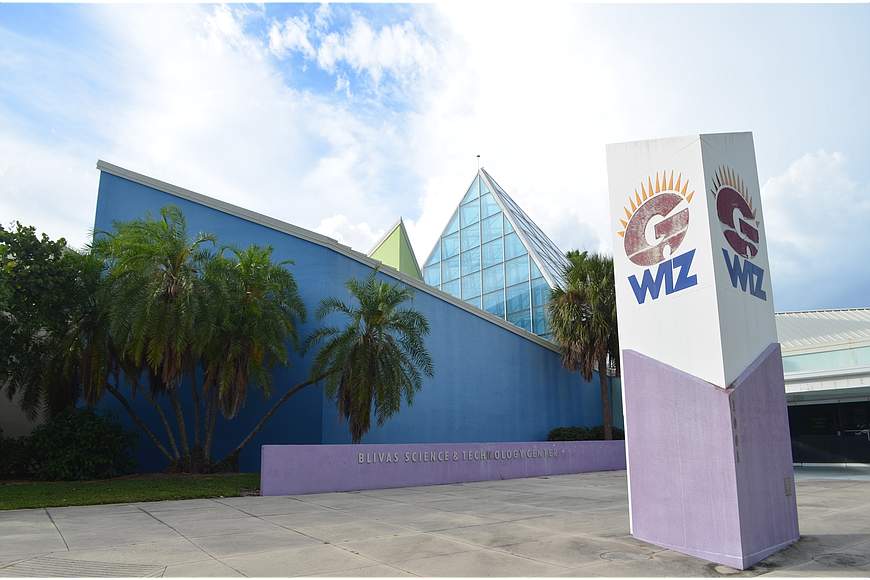- April 29, 2024
-
-
Loading

Loading

After nearly 11 hours of testimony and debate today, the city’s Historic Preservation Board was evenly split on whether the demolition of the former GWIZ building should proceed.
In a 3-3 vote, the board was deadlocked on an appeal challenging city staff’s issuance of a demolition permit for the bayfront building at 1001 Boulevard of the Arts. As a result, the motion to reverse the city’s decision failed, leaving the demolition permit to stand as previously issued.
In September, the City Commission adopted a bayfront master plan that included the demolition of the GWIZ building as part of the construction of a public park. The plans drew pushback from a group campaigning to preserve the structure, originally built in 1976 as the Selby Library. The preservation advocates said the building carried architectural and cultural significance.
Still, the commission reaffirmed its decision at an October meeting. In November, Mayor Liz Alpert sent a letter objecting to the Historic Preservation Board’s efforts to designate the city-owned structure as historically significant. City staff has argued the building is in poor shape and is not old enough for historic designation.
City staff issued a demolition permit in December. In a report, staff reiterated its belief the building was not qualified for local or national historic designation, which meant the demolition application did not need to go before the Historic Preservation Board.
But an appeal, filed in December by resident Edward J. Haas, contested that conclusion. Haas argued the building was eligible for historic designation and staff improperly issued the demolition permit without following the necessary procedures.
Haas’s argument at today’s special meeting focused largely on the building’s architectural value. A Dec. 3 letter from Max Adriel Imberman, a historic preservationist in the Florida Department of State, said the building could be considered for historic designation despite being under 50 years old.
The letter said the building may potentially be considered exceptionally significant because it is an example of architect Walter Netsch's use of field theory, a geometric design concept. The letter said any nomination for the National Register of Historic Places would need to include proof the building’s conversion to a science center had not ruined the integrity of the original design.
Haas called architects and preservationists as witnesses, all of whom testified to the significance of the building. Advocates for preservation said the city did not sufficiently examine the options for finding a new tenant or adapting the building for a new use.
“It’s part of Sarasota’s legacy,” local architect Carl Abbott said. “It’s part of the fabric of the city.”
City staff said Imberman’s letter did not mean the building met the standards for historic designation — only that the argument could be made. Senior Planner Cliff Smith reiterated his belief the building was not exceptionally significant, stating it was not one of Netsch’s most notable works or the only example of field theory in the state.
Smith cited a Dec. 10 letter from Timothy Parsons, the director of the Florida Division of Historical Resources. Without additional information, Parsons said he could not retract an earlier determination stating the building was not eligible for designation.
“I personally am thrilled to see this level of interest in historic preservation in the city of Sarasota,” Smith said. “The fact that people are turning out for historic preservation means that as a body, we’re doing our job. Unfortunately, this is not the building.”
Those who supported the demolition said community input during the bayfront planning process showed high demand for more open space near the water and low interest in the GWIZ building. City staff said the structure was in an environmentally risky area and renovations for a new tenant would be prohibitively expensive.
The Historic Preservation Board was split following the testimony. Board member Albert Sanchez thought evidence showed the building was eligible for historic preservation, which meant staff should not have approved the permit administratively.
Sanchez voted alongside board members Evelyn Mangie and Ramsey Frangie to overturn the demolition permit.
“I believe we’ve heard enough today to rule in favor of the appellant,” Sanchez said.
Board member Leonardo Lunardi agreed the city’s historic analysis of the site was lacking in some areas, but he was not convinced staff acted beyond its authority in issuing the demolition permit. Lunardi, Claudia Barnett and Roberto Gonzalez voted to deny the appeal and uphold the city's decision.
Only six members voted after board member Christopher Wilson recused himself from the discussion at the city’s request. Before the meeting, the city filed a motion expressing concern Wilson would not be impartial because he had previously advocated for the preservation of the building.
The tie upheld the city’s initial issuance of the demolition permit. Before the vote, however, Haas vowed to challenge the preservation board’s decision if it denied his appeal — which means the debate could next head to the City Commission for further review.